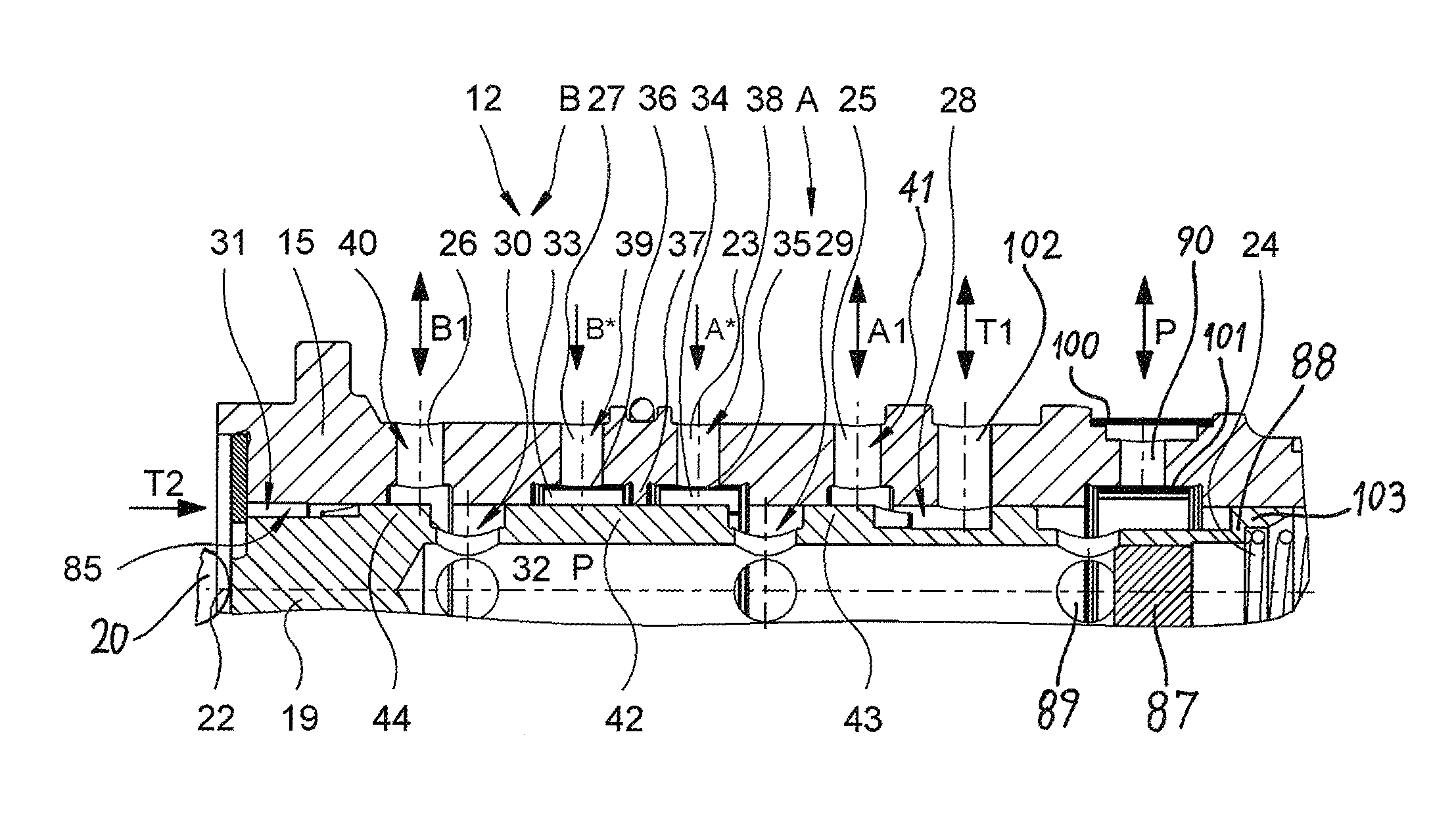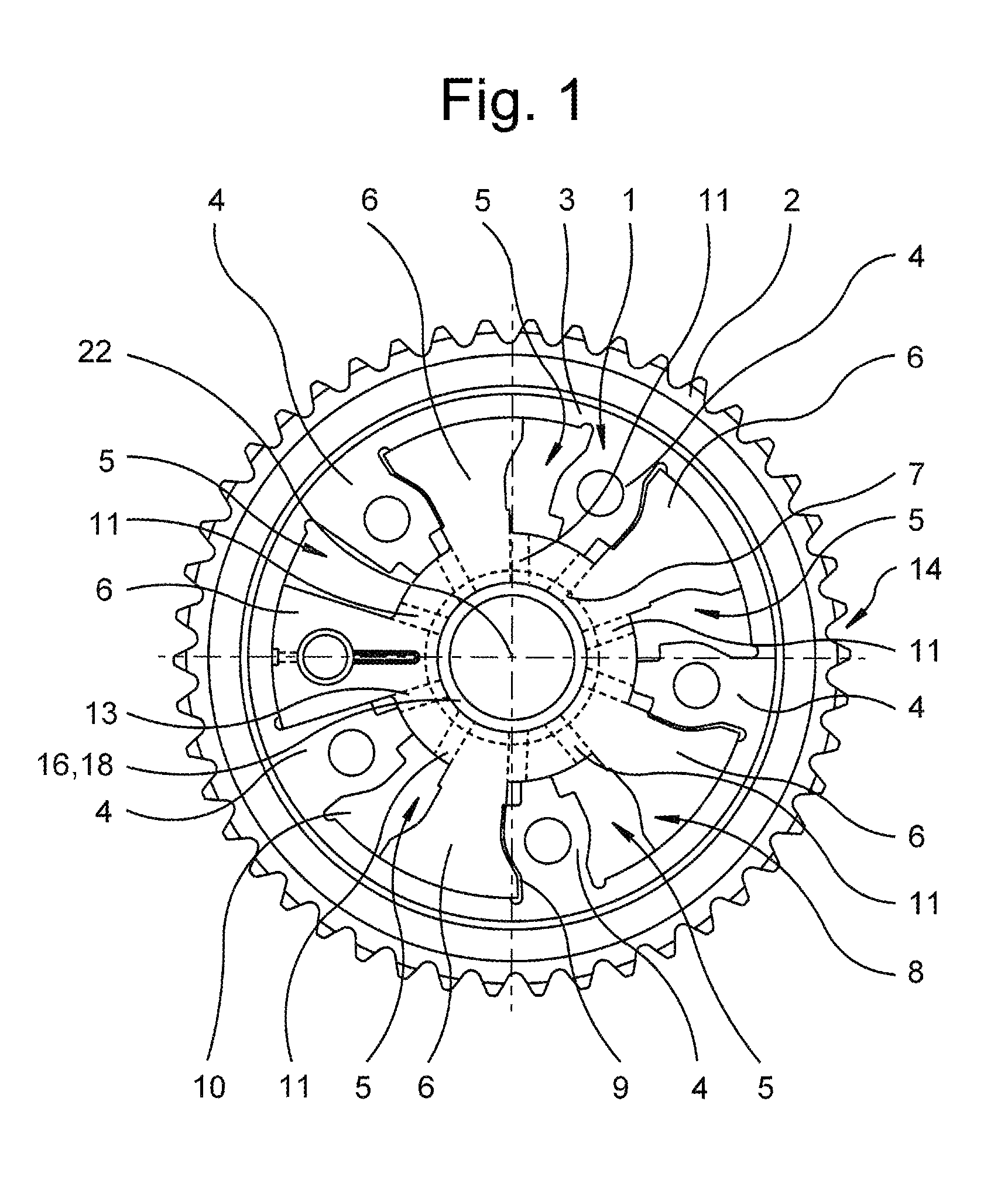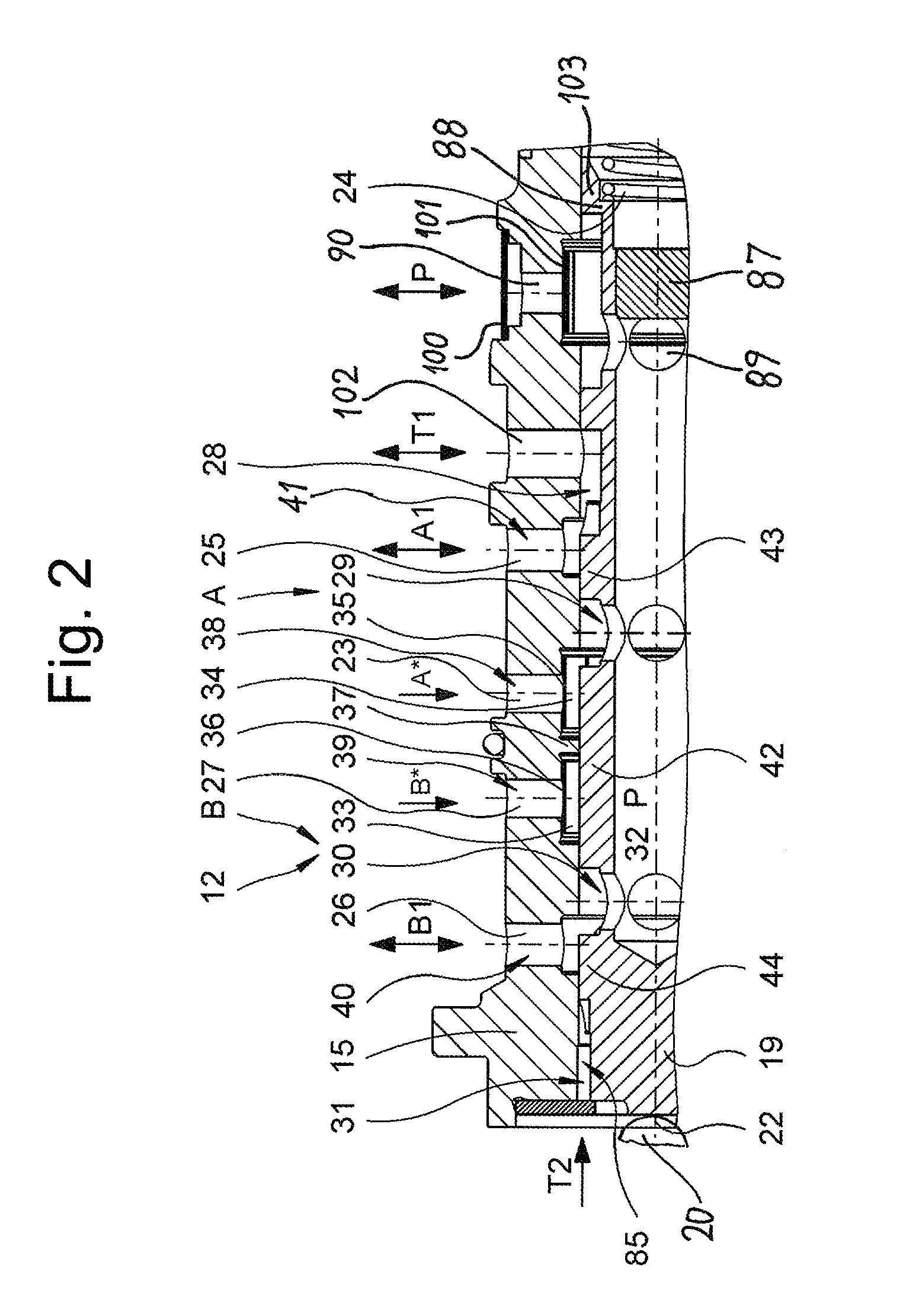Hydraulic valve for an oscillating motor adjuster
a technology of oscillating motor and hydraulic valve, which is applied in the direction of valve arrangement, non-mechanical valve, thin material handling, etc., can solve the problems of hydraulic valve stress, and achieve the effects of accurate design, cost-effectiveness, and large play in the configuration
- Summary
- Abstract
- Description
- Claims
- Application Information
AI Technical Summary
Benefits of technology
Problems solved by technology
Method used
Image
Examples
Embodiment Construction
[0031]The angular position of a camshaft 18 can be continuously changed relative to a drive wheel 2 with an oscillating motor adjuster 14 according to FIG. 1 during the operation of an internal combustion engine. By rotating camshaft 18, the opening and closing time points of the gas exchange valves are shifted so that the internal combustion engine offers its optimal performance at the speed involved. The oscillating motor adjuster 14 has a cylindrical stator 1, which is joined in a torsionally rigid manner to drive wheel 2. In the example embodiment shown in FIG. 1, drive wheel 2 is a chain wheel, by means of which a chain, which is not shown in more detail, is guided. Drive wheel 2, however, may also be a toothed belt gear by means of which a drive belt is guided as a drive element. Stator 1 is drive-connected to the crankshaft by means of this drive element and drive wheel 2.
[0032]Stator 1 comprises a cylindrical stator base 3, on the inner side of which webs 4 protrude radially...
PUM
 Login to View More
Login to View More Abstract
Description
Claims
Application Information
 Login to View More
Login to View More - R&D
- Intellectual Property
- Life Sciences
- Materials
- Tech Scout
- Unparalleled Data Quality
- Higher Quality Content
- 60% Fewer Hallucinations
Browse by: Latest US Patents, China's latest patents, Technical Efficacy Thesaurus, Application Domain, Technology Topic, Popular Technical Reports.
© 2025 PatSnap. All rights reserved.Legal|Privacy policy|Modern Slavery Act Transparency Statement|Sitemap|About US| Contact US: help@patsnap.com



